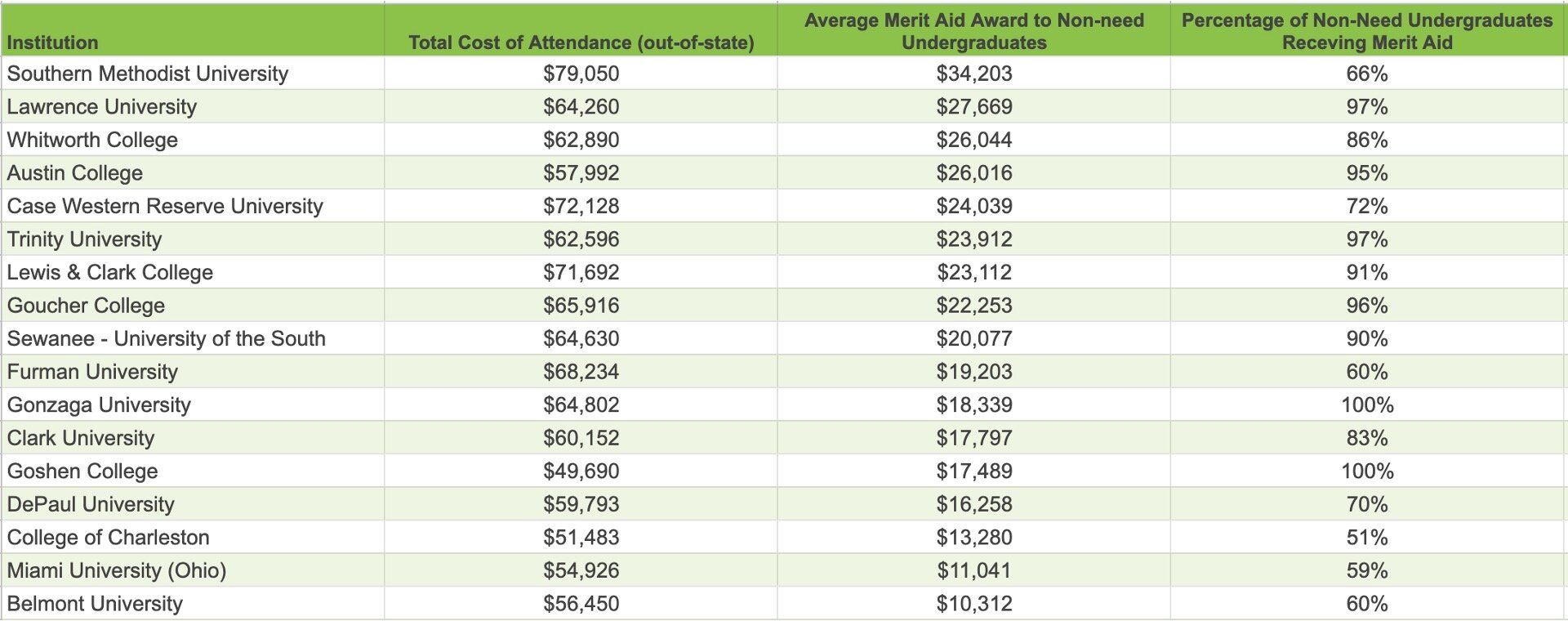This page is licensed under Creative Commons under Attribution 4.0 International. Anyone can share content from this page, with attribution and link to College MatchPoint requested.
The Moneyball of College Applications: Financial Aid
One of the most frustrating problems for high school parents during the college planning process is the lack of quality data surrounding admissions. Some parents spend hours—or even days—assembling statistics from college websites and guidebooks.
To give you easier access to quality data, our colleagues Jennie Kent and Jeff Levy have released their 2021 analysis of Domestic Undergraduate Need-Based and Merit Aid
As parents evaluate affordability, they often consider the average need met and merit aid data provided by colleges and universities on their student's list. Analyzing this data early can prevent roadblocks down the road.
On the whole, data analyzed from these 600 colleges shows a decrease in the percentage of non-need undergraduates receiving aid and, in particular, merit aid in 2018. The dollar amount of the average merit aid award has also dropped.
Having said that, there are a number of schools that offer merit aid awards that are significantly higher than the average:

Be sure to look closely at the numbers: For example, Duke's average merit aid is the highest ($69,506), but only 6% of students receive that kind of aid. Southern Methodist University, on the other hand, has an average aid of $34,203—less than half of Duke's—but 66% of students receive that merit aid.
Bottom line: It pays to do your research on the most generous colleges when it comes to merit aid. If you think your student might be eligible for merit aid, these are all excellent schools to consider, based on the data.
When looking at overall need met data (both merit and need-based), the widest disparity in percentage of need met exists between public universities and somewhat selective private colleges:
- Highly selective colleges (Ivies and their immediate peers) can often meet 100% of domestic applicants’ demonstrated need. For example, Duke, Harvey Mudd, Middlebury College, MIT, and Pitzer College were among the highly selective schools that reported meeting 100% of need in 2016.
- Selective private colleges generally meet between 60% to 100% of domestic applicants’ demonstrated need. For example, American University reported 73% need met, Baylor 65%, TCU 66%, SMU 85%, Case Western 83%, Grinnell 100%, and Sewanee 82%.
- Public universities reported meeting between 45% to 99% of domestic applicants’ demonstrated need. For example, the University of Texas-Austin reported 70% need met, Texas A&M 72%, Colorado - Boulder 81%, and Colorado State 80%.


